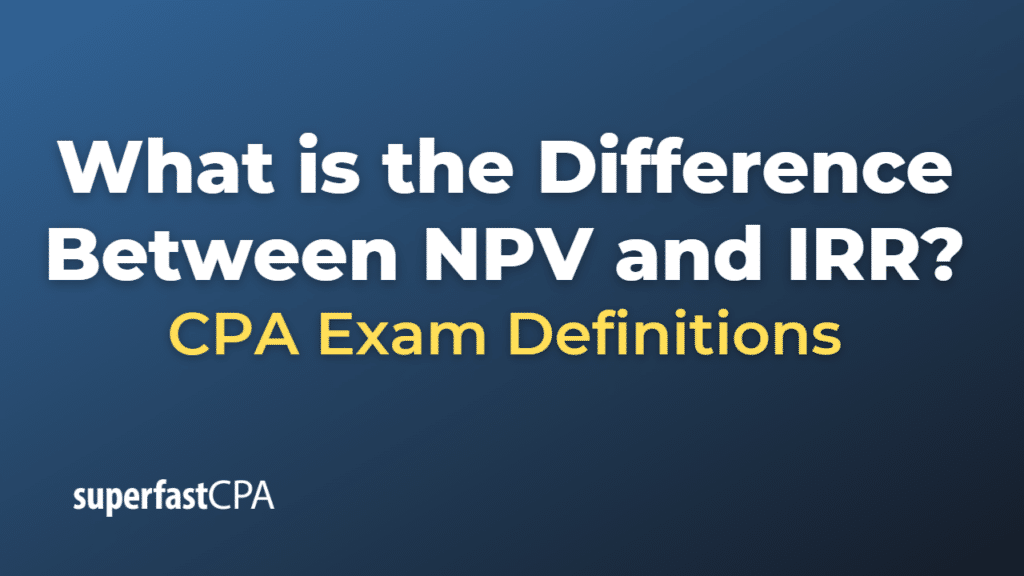Difference Between NPV and IRR
Net Present Value (NPV) and Internal Rate of Return (IRR) are both financial metrics used in capital budgeting and investment appraisal. They help businesses decide whether or not to undertake a particular investment. Here’s what each of them represents:
- Net Present Value (NPV): NPV calculates the present value of cash inflows and outflows of a project or investment. In essence, it tells you how much an investment is worth in today’s dollars. The idea is that a dollar today is worth more than a dollar in the future due to inflation and the potential earning capacity of money. A positive NPV indicates that the projected earnings (in present dollars) are expected to be greater than the costs, and thus the investment could be a good one.
- Internal Rate of Return (IRR): The IRR is the discount rate at which the NPV of all cash flows (both inflow and outflow) from a project or investment equal zero. In other words, it is the rate at which the present value of future cash inflows equals the initial investment. The IRR can be used to compare the profitability of different investments: the higher the IRR, the more desirable the project.
While both are useful, they sometimes lead to different conclusions. NPV gives a dollar amount that an investment is expected to produce, which can be easier to understand. However, it relies on a discount rate, which might be difficult to choose accurately. IRR provides a break-even rate, which can give a good sense of risk, but it can be misleading when comparing projects of different sizes or timings of cash flows.
Example of the Difference Between NPV and IRR
Let’s consider a simple investment scenario to illustrate the difference between NPV and IRR.
Assume you have an opportunity to invest in a project that requires an upfront investment of $100,000. This project is expected to generate cash inflows of $40,000 per year for the next three years.
To calculate NPV, you’ll need a discount rate. Let’s use a discount rate of 10% to reflect the return you could have received from an alternative investment with similar risk.
The NPV calculation is as follows:
\(\text{NPV} = \frac{\text{Year 1 cash inflow}}{(1+ \text{discount rate})^1} + \frac{\text{Year 2 cash inflow}}{(1+ \text{discount rate})^2} + \frac{\text{Year 3 cash inflow}}{(1+ \text{discount rate})^3} – \text{Initial Investment} \)
\(= \frac{\$40,000}{(1+0.10)^1} + \frac{\$40,000}{(1+0.10)^2} + \frac{\$40,000}{(1+0.10)^2} -\$100,000 \)
\(= \$36,364 + \$33,058 + \$30,052 – \$100,000 \)
\(= \-\)526 $
The negative NPV of $526 means the present value of cash inflows is $526 less than the initial investment, suggesting that the project may not be a good investment given the chosen discount rate.
To find the IRR, we would set the NPV equation to zero and solve for the discount rate. This is often done through trial and error, spreadsheet software, or financial calculators, as it involves solving a polynomial equation. Let’s assume we find that the IRR is 8%.
The IRR of 8% means the project will break even when the discount rate is 8%. If the required rate of return for this project is less than 8%, the project could be considered a good investment.
In this example, NPV tells us that at a discount rate of 10%, the project is not a good investment, while the IRR tells us the project breaks even at an 8% discount rate. If the company requires a return of less than 8%, the project could be a good investment. If the company requires a return higher than 8%, it should not undertake the project.













